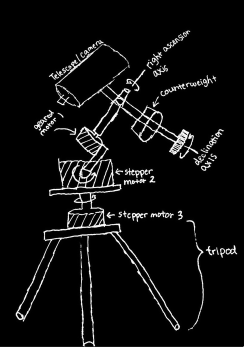Stars, planets, and the assorted astronomical objects that are visible in the night sky are dim. This makes life difficult for any intrepid photographers that seek to capture them for posterity, as camera sensors/film must be exposed for several seconds to detect all but the brightest objects. Any changes in the position of the camera lens relative to the starscape can smear the stars across the camera sensor, producing streaks of starlight in the final image. Since the majority of this movement comes from the rotation of the Earth around its axis, astrophotographers use motorized camera mounts to rotate their cameras with the Earth. These equatorial mounts rotate cameras at a speed that is set by the user, exposing them to human error and making their setup procedure rather inconvenient. Furthermore, the majority of equatorial mounts that are affordable for amateur astrophotographers are incapable of tracking the movements of nearby objects (planets and comets) that move relative to the starscape.
We aim to resolve both of these issues with Asterism. Asterism is an equatorial mount whose motors are linked to the camera through a computer vision routine, enabling it to automatically calibrate the speed with which it rotates the user’s camera. A second mode of the computer vision routine will allow it to track individual objects that move relative to the stars. This is a significant, and most importantly, affordable step up from the budget equatorial mounts that are commonly used by amateur astrophotographers.
The details of our proposal are linked here.
